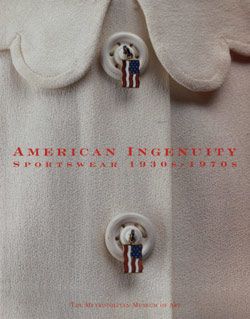Dress
Designer Bonnie Cashin American
Not on view
A cropped jersey top, with shoulder snaps, is combined with a copious suede skirt. Cashin was sympathetic to the body-visibility and body-acuity of the 1970s. Having long been a pioneer, she was as ready to accommodate the body as she was to continue to experiment with the versatility of suede for spring and the uses of practical fasteners. In this ensemble that depends on piping and outlining, the shoulder snaps merely emphasize the design. Big pockets are made evident for the boldness of this design and its sense of self-sufficiency could not be compromised by the etiquette and encumbrance of carrying a handbag. For Cashin, freedom means having your hands free. The story of freedom also extended to footwear. Cashin, McCardell (perhaps the first), Schnurer, and others who advocated pockets also promoted the use of flat shoes and dance slippers. There was a logical correlative to freedom of hands in the deliverance of feet from high heels and hard shoes.
Due to rights restrictions, this image cannot be enlarged, viewed at full screen, or downloaded.
This artwork is meant to be viewed from right to left. Scroll left to view more.




